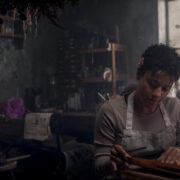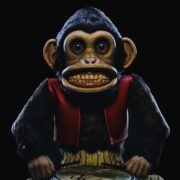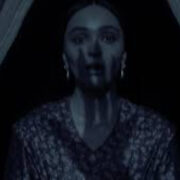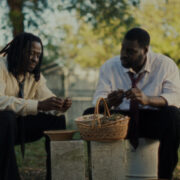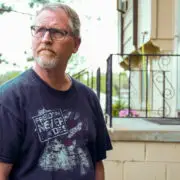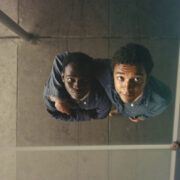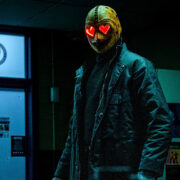“Let’s Start From Scratch And Make Something New, Something That People Haven’t Done Before”. Interview With Susan Kucera, Director Of LIVING IN THE FUTURE’S PAST
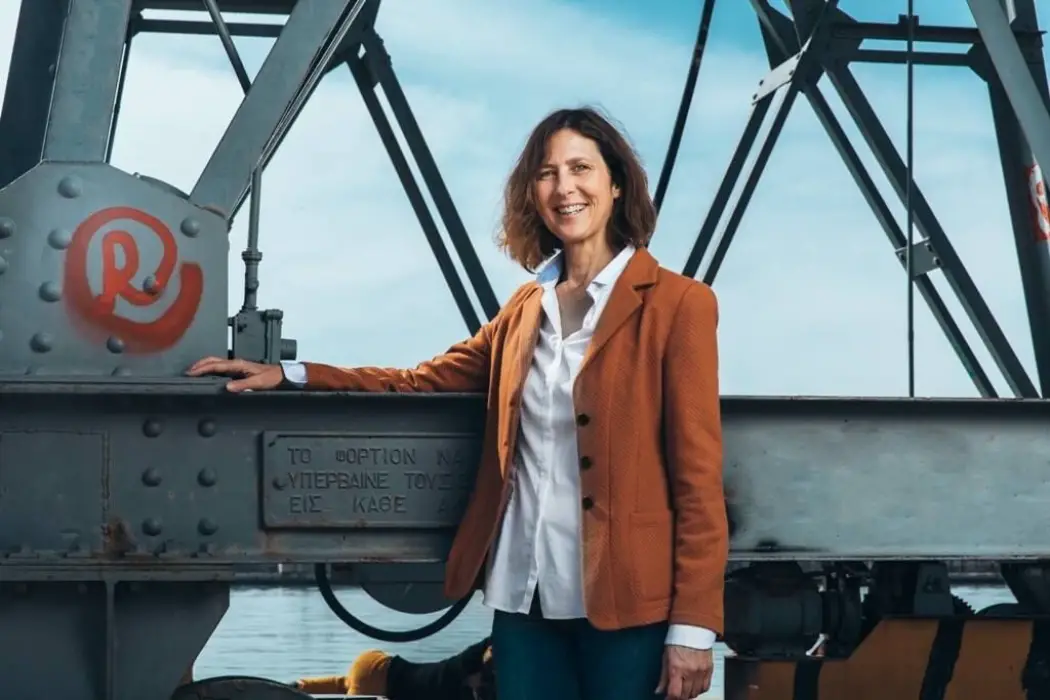
Stephanie Archer is 39 year old film fanatic living in…
More often than not, films about the environment and the irreparable damage caused by the human species appeal to viewers for their information, but focus on the attempt to guilt viewers into changing their behaviors. With Living in the Future’s Past, writer/director Susan Kucera and her team successfully manage to find the balance between knowledge and positive encouragement for change. Where others point their finger in disgust, Kucera takes a moment to provide understanding into why we do the things we do, enabling us to make the choices on what we an do to help.
I was able to speak with Susan Kucera, diving deeper into the creation of her masterpiece and how she contributes naturally to create the future she wants to see. I also spoke with the film’s narrator Jeff Bridges, read the interview here.
Stephanie Archer for Film Inquiry: I just wanted to start off by saying that was such a gorgeous film and it’s definitely a must see.
Susan Cicero: That’s nice to hear. I’ll tell Jeff too. He will be happy to hear that as well.
I did want to start off today where your film begins. Your opening shots are gorgeous and a real testament to your skill as both a director and a cinematographer. The images that follow your opening shots, like in between the interviews, did you film those as well?
Susan Kucera: I did. I filmed all of them. They’re out of a thousand, gosh I think there is thousand cuts in this film. And out of a thousand there’s maybe like a hundred that are either archival, or there’s a couple from China, but the rest are all mine. I filmed Jeff on top of the Santa Monica mountains – before the fire. And so that opening scene is him up there, he even had to try to carry the tripod, and then the closing scene was in the same location. Then the series of opening shots, some of them were Iceland, some of them were Montana. Yeah, all over the place.
Was there anything that you did during filming to stay eco-conscious while filming in so many different locations?
Susan Kucera: I would say like, you know, it’s funny like the film in a large way looked at our own sort of, you know, the contrast between we’re all trying to do these things and yet how do you actually become part of the sort of super organism that isn’t causing more problems. Right? And so the irony is obviously, you know, I had to fly to these places, but these were places that I was filming anyway.

It wasn’t, like a lot of them, I didn’t just go to specifically, like I’m always trying to be very eco-conscious and it’s just a crew of one. Sometimes I had a helper with me. I only use natural lighting. I live in Hawaii, so as far as just like nuts and bolts, the film was edited using the solar on my rooftop. But I always hate to bring myself into it to because, you know, as I go around, I start thinking about these things and we’re all part of this, so maybe I’ll have to start making documentaries that are just, you know, in my backyard. [laughs]
The editing between this imagery and the various interviews created such a dynamic contrast, as well as drove the message of the film. How did you decide what to use and when?
Susan Kucera: Oh my gosh, that is a very organic process that I have. I sit with the footage for a long time and I just feel my way through it. And then of course, this was a collaboration with Jeff, so I created a basic structure and then sent it to him and he had some ideas. So we really did collaborate through the whole process. I think it’s just like, how did it make me feel, what did this do for my mind, my emotions, and it’s almost like painting a painting. So you’ve got that. Plus, you’ve got all the interesting information. I’m kind of wanting to hold the viewer, you know, suspend them in this space.
Within Living in the Future’s Past, it is discussed that we need not only to keep fossil fuels in the ground, but to change our habits overall. What attempts, if any, were made during filmmaking to adhere to this?
Susan Kucera: Well, like I said, the film doesn’t just look at the nuts and bolts facts. I mean we all are hypocrites to many, you know, there’s a whole part in the film about like, well you want to keep fossil fuels in the ground and yet we’re all using the infrastructure – flying, driving, etc. – that uses fossil fuels, right? And so that is something that the film examines and you know, just like people watching the film will start thinking about this in their own mind. I do the same thing. Like I find myself just doing things a little bit differently, because the film doesn’t ask people to run out and do something right now. What it’s really asking people to do is to think about how they’re thinking and how we’re, you know, our relationships with everything. And that’s why Jeff talks about how everything is the system of relationship at the end.
And so I would love to tell you that I’m, you know, I am kind of off the grid [laughs] but those sorts of things are sort of secondary because the whole sort of new shape that we need to make, we need to start sort of moving in that direction together, and we don’t have to have sort of a coordinated effort. But I find I buy food differently, I won’t drink out of a plastic water bottle. [laughs] I try to do a lot of different things that will minimize my impact. And then half the time, I’m just sort of thinking about it, and I think the more we all think about it, when new opportunities arise to do something different, we’ll be more prepared.
A few of the interviews seemed to be filmed at different times and locations. How long did it take to bring Living in the Future’s Past to life?
Susan Kucera: It took two and a half years, I guess really two years. The film has been travelling to festivals since February. So it’s been about two and a half years. It took two years and some of the people like Bruce Hood, who’s in the film, I filmed him various different times. My daughter goes to school in the UK, so I tried to time seeing her with filming him. Yeah, it was, like I said, an organic process that it just evolved.
You’ve been in the education filmmaking market for quite some time and you have two previous environmentally driven documentaries behind you.
Susan Kucera: Yeah, I’ve got three films. One was on Argentine tango, then I guess that was more about love and connection. But the other two, one was Trading on Thin Air and the other one was Breath of Life.
What made you want to create a third environmentally driven documentary?
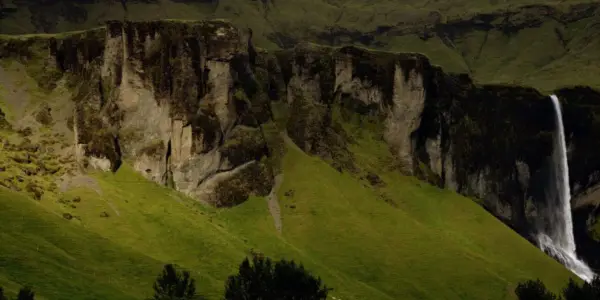
Susan Kucera: Well, I work with the same executive producer that I did for Breath of Life and we were looking to make another film. And originally we just were looking for a narrator and when Jeff learned about the subject matter, he thought, oh, well, you know, let’s start from scratch and make something new, and something that people haven’t done before. We looked at other documentaries. We knew what we didn’t want to do ahead time and the sort of parameters that we were trying trying to expand – not just staying with the choir. And so the executive producer was very interested in why people do what they do. And he even wants to make a third one: Breath of Life, this one and then we’ll do one more.
You mentioned Jeff Bridges coming on board. How did he start getting involved in the project, both for producing and narrating?
Susan Kucera: Well, yeah, like I said, we’re interested in doing a second film because we did Breath of Life and we were thinking let’s get a narrator. And so we contacted Jeff, he watched Breath of Life and was very interested in the whole subject matter and then decided that he was going to collaborate and just make a film. So we collaborated for two years. We did mostly facetime, [laughs] which was a great way of doing it. And this is the result.
In your previous environmental documentaries, you took a hard look at how we fool ourselves and how we affect the environment, as well as how the carbon market and capitalism make profit off the environment. Where did the viewpoint for this film incorporating evolution, neuropsychology come into play?
Susan Kucera: Mostly because of the people that I met during the making of Breath of Life, the scientists. We just did a lot of further reading. We feel like if you know how your mind works and how your subconscious is kind of branding things, and if you’re aware of these things, it’s a whole lot easier to make different decisions when you’re aware of what your sort of taking a hold. It’s kind of like having super powers right here, you’re much more aware and without that, it’s really hard to consciously make these shifts and changes.
So you talked about all these scientists that you talked to you during Breath of Life. In Living in the Future’s Past you have such an eclectic range of experts. How did you go about culminating such a vast panel?
Susan Kucera: We knew we wanted to have a general. We wanted them have somebody from the military and that’s how we reached out to Wesley Clark, who was just phenomenal. And Leonard Mlodinow, he is the physicist. He wrote, he’s written several books, but we were very much fans of his books ahead of time. And then we contacted him. And then the philosopher, Timothy Morton, my daughter again, she’s working on her PhD eco, oh gosh it’s got a long sort of thing, eco-criticism. It’s like violence and consumption in English literature or something like that.
But anyway, she had introduced us to Timothy and we just fell in love with his mind exercises on how to look at things differently because it really does make you think. So that’s how we found him. Yeah, there’s a lot of people in their. Amy Jacobson, she’s from Rutgers. She worked with some famous evolutionary biologist that we’ve worked with in the past and I just adore her, so we decided to use her. So lots of these people we researched their books, we just want to be able to bring that sort of point of view to the screen.
And that definitely comes across. I was really impressed with the amount of different areas of science and themes that you were able to get experts into or from.
Susan Kucera: Yeah, it’s an interesting read, but it leaves you with pretty good understanding of the state of humanity and why we are the way we are now, and it’s in a weird way, it’s very freeing and uplifting even though these are really heavy issues. Most people who seem to, actually all the people who are talking to me after they’ve seen the film, find it refreshing that no one’s making them feel guilty or bad about being human and it allows them to access their higher reasoning which everybody, every human has. So they like it.
There is there’s a message of a collective contributions, how we may not think as an individual we do harm, but as a super organism of a species, we do a irreparable damage.
Susan Kucera: Right.
How do you handle the naysayers that may continue to disagree with this film?
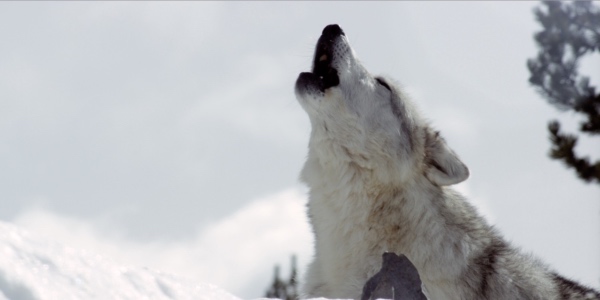
Susan Kucera: Well, I actually haven’t run into any yet. I’m sure there will be at some point when it comes out. But yeah, it’s not like, we’re not technically a super organism. We’re like a super organism. The way we move things around the world, dig things up, you know, change the environment, it’s beyond politics. Just the way human society has been working since the neolithic age and I think that for me, you know, emergent behavior, which we discuss in here, is really important because you almost don’t even need to know, you know, you don’t have to have somebody tell you what to do, you know, if you’re looking at things through the lens of psychology and physical energy, it’s kind of easy to make those choices. I mean they might not be that easy at first, but eventually, you know, they become easier and then its kind of fun. [laughs]
And then it’s like if everyone’s doing that, we’re actually creating a new shape of civilization all together. But it’s not something that’s happening fast enough obviously. Because I was thinking if there wasn’t even climate change, right, if that was even off the table, say we solved it, we had some carbon sifting thing and that go solved, that doesn’t change the fact that we’re ripping up, breaking forth or putting in palm oil plantations for lipstick or cosmetics. It’s the whole enchiladas, it’s how everything functions. Since we have to share this planet with other beings that aren’t human.
The music that accompanied this film was really very peaceful, echoing tranquility while still creating a resounding sense of tension. How did you come to work with composers Keefus Ciancia and Bob Holroyd?
Susan Kucera: So Bob Holroyd did a lot of the music for Breath of Life, and so that’s how I knew him. And Keefus Ciancia has been working with Jeff for a long time. He’s a very accomplished, whether they’re both accomplished composers, he just does a lot of movie soundtracks. We again, very organic, both of them have the sort of the same style that I have, sort of a healing process. And so Keefus was great because he gave me different themes, sounds, and music to sort of pick from what felt good. Then we would hone in on one and then he would use that sort of found for certain areas, or if we wanted to certain feeling, we went with it – what would make you feel this way. And so we like that.
Their music definitely elevates a lot of the elements of the film. It was really enjoyable to listen to.
Susan Kucera: When did you watch it to set a curiosity?
I actually watched it last night.
Susan Kucera: Okay, good. Good. That is the one that’s going into the theater. to be. We did a slightly, it was not much different, but the one that was in the festival was just a little bit – anyway, not much has changed. So you saw the latest, latest version. So I’m glad to actually to hear that. [laughs]
I have one last question for you. It’s to turn your film’s own final question kind of back. I was wondering what you do to contribute that comes naturally to create the future you want to see?
Susan Kucera: Well, aside from having my mind in a different sort of way of thinking and being aware of my shortcomings and my own hypocrisy? Right, so I’m well aware of that. I just do every little thing that I can, and like Jeff, what does Jeff do, he makes movies and so do I. And so that’s what we did. We made a movie that expressed what we thought would contribute to the cultural narrative , which is important because we need that.
But as far as like the personal, everyday physical thing that I do, I do things very differently. I definitely do. I’m much more engaged with the non-human element in my world, how I engaged with things and how I just do things. But yeah, it’s on my mind all the time because it’s going to take, as you probably noticed the sort of subtle moon challenge imageries in there, but that’s what scientists think it will take. It will take this sort of moonshot of people shifting, but there’s 7 billion of us so that has a lot of power.
Film Inquiry would like to thank Susan Kucera for taking the time to speak with us.
Living in the Future’s Past will be released in the US on October 5, 2018. For all international release dates, see here.
Does content like this matter to you?
Become a Member and support film journalism. Unlock access to all of Film Inquiry`s great articles. Join a community of like-minded readers who are passionate about cinema - get access to our private members Network, give back to independent filmmakers, and more.


